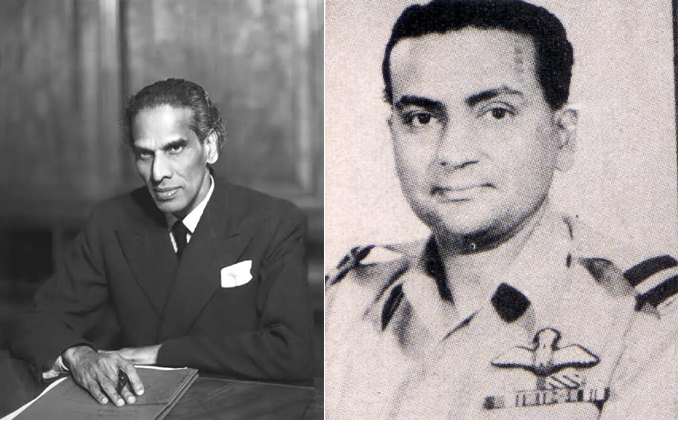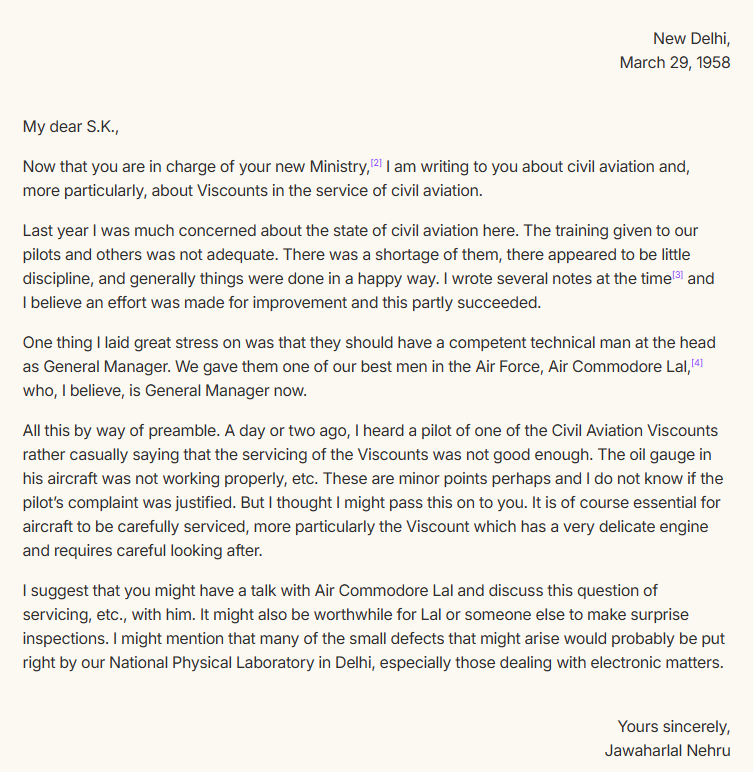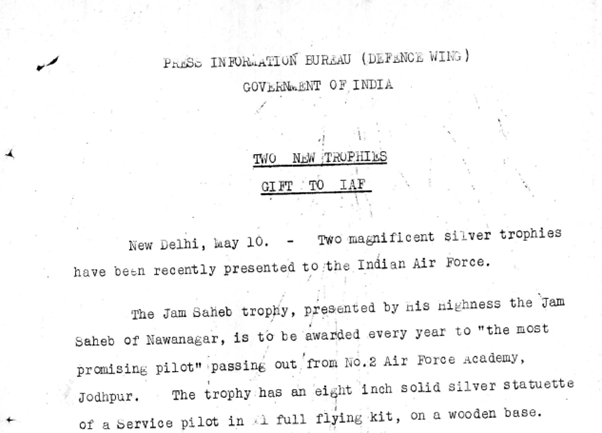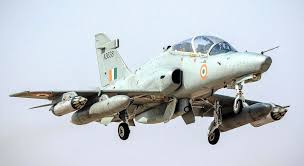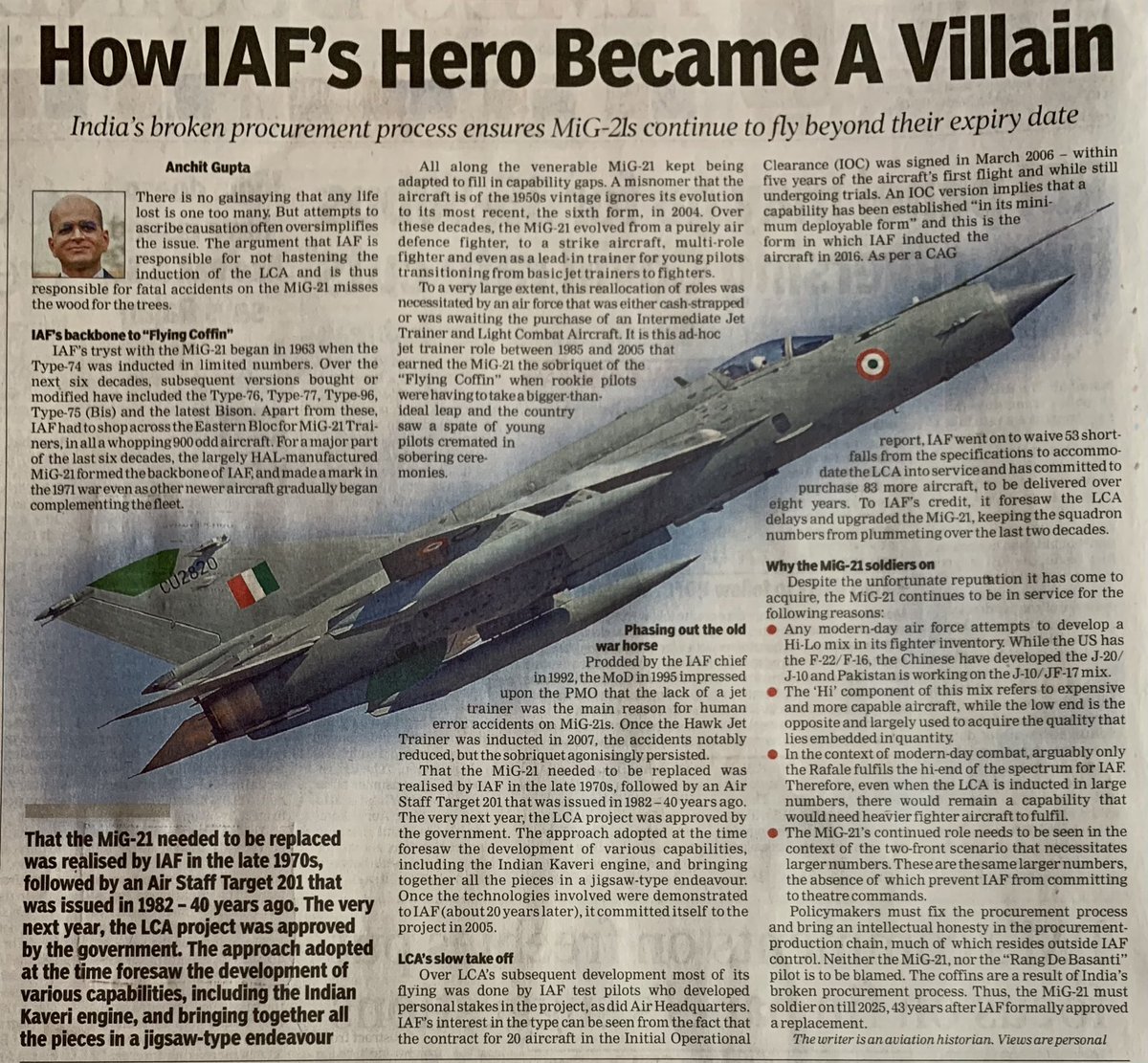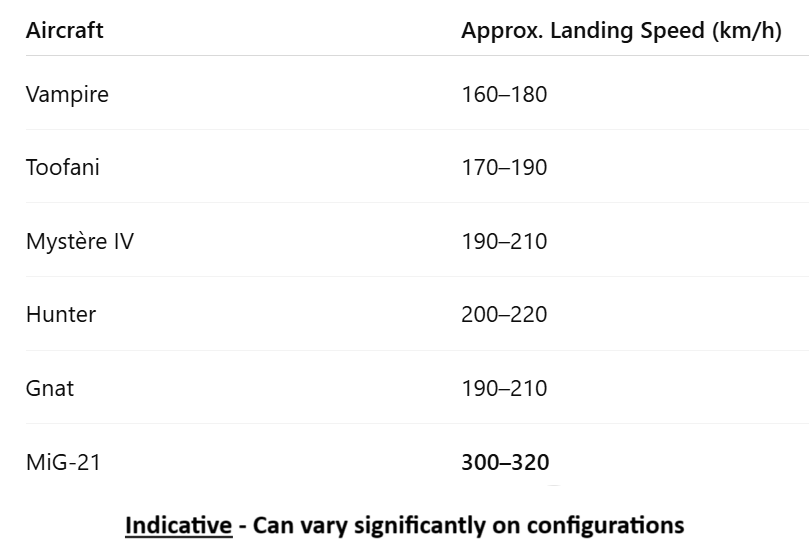The royalty did take to serving in the military and @IAF_MCC was no exception. Read on for a glimpse of the royals who served and earned laurels. Many of them were killed in service as regular commission officers. 24 of them, including minor states & Principalities (1/20)
Fg Offr Dhrubendra Chandra Bhanj Deo joined the IAF with the 1st Pilot Course in 1939. He was the successor to the throne of Mayurbhanj state. On 2 Aug 1942, while flying a Hudson ac on reconnaissance duty off Cuttack with 353 Sqn RAF, the aircraft crashed, killing all on board. 

Kanwar Jaswant Singh was a scion of the Kapurthala Royal family. Studied at RIMC, Joined the Indian Army, seconded to IAF, Commanded 2 Sqn and numerous other units, died in harness as the AOC-in-C of Eastern Air Command just after the 1962 war. tinyurl.com/yeyknwye (3/20) 

Paljor Namgyal, the eldest son of the King of Sikkim, volunteered with the IAFVR and was commissioned with the 5th PC. After his training was posted to 2 Sqn and 1 Sqn where on 20 Dec 1941, he was killed in a Lysander accident at Peshawar, aged 20. (4/20) 

A coursemate of Paljor Namgyal (5 PC) was Giriraj Saran Singh, from the royal family of Bharatpur. He served as a Fighter pilot and rose to be Sqn Leader, leaving IAF in 1946. He would later me Member of Parliament twice and passed away in 1969. tinyurl.com/bddfnpwn (5/20) 

From the 5th PC as well, but commissioned as an Observor was Sahebzada Imtiaz Khan was from the royal family of Sachin. "Sahebzada" was retained in his official name. He served in WWII and opted for PAF, retiring as Group Captain in 1960 and died in the USA in 2012. (6/20) 

Yeshwant Rao Mukne was commissioned with the 8t PC in Sep 1941 and served till 1944. He was at that time the last rule of Jawhar State near modern-day Thane. He was a Member of parliament thrice and passed away, aged 60 in 1978. tinyurl.com/5fxzaw27 (7/20) 

Pratapsingh Chintaman Patwardhan was commissioned with 9 PC in November 1941 and hailed from the Patwardhan family ruling the Sangli State. On 22 Aug 1942, while flying with 1 CDF, his Atalanta AW15 crashed at St Thomas Mt and burned out. He was 26. tinyurl.com/2s3mvzfh (8/20) 

The last two royals who were in the IAF flying branch, pre-independence were Rana Bahadur Singh Karki of Nepal who died in a bird hit of his Spitfire in 1946 with 7 Sqn, and Dattaji Rao Bohojung Rao Ghorpade of Sandur state who left service in 1946. (9/20) 



Group Captain Bharat Singh was the first of the erstwhile Royals, from the state of Panna. He had a glorious career flying the Hunter and the Gnat, commanded 2 Sqn and 7 Sqn, and earned VrC in the 1965 War. tinyurl.com/2p8n88zn (10/20) 

Rajkumar Jayvant Singh was from the state of Limbdi. He was commissioned with 51/52 PC in 1950. He commanded 17 Sqn and 32 Sqn and was Flt Cdr 32 Sqn during the 65 war, retiring soon after and passed away in 2002. (11/20) 

Ranvijay Singh was commissioned in 1951. He belonged to the small state of Dumraon in modern-day Bihar. He had the distinction of attending the 1st PAI Course, commanded 7 Sqn and C&R School, and retired in 1979. Also from the same family, was Kanak Singh, a Navigator. (12/20) 



Air Cmde Janak Pratap Singh was the Raja of Narendrapur near Lucknow. He was commissioned with 57 PC and excelled as a fighter pilot commanding 47 Sqn and later 2 Wing. He was from the 1st FCL Course at TACDE. Retired in 1992, passed away in 2008. tinyurl.com/2p86sufm (13/20) 

From 3rd JSW course, and 60 PC was Karan Sher Singh Kalsia of Kalsia state. He immortalized himself while steering away his Hunter aircraft from a village. He was awarded Kirti Chakra. @MandeepBajwa writes an outstanding piece on him here - tinyurl.com/yneaapju (14/20) 

One of only two royals to make it to Air Mshl was Janak Kumar of the 68 PC from the state of Lathi in Gujarat. he commanded the 28 Sqn, CAW, 8 Wing and retired as AOP from AirHQ. His reputation of professionalism and humility stood him apart. He died in 2020. (15/20) 

Samara Bikram Singh, a scion of the Tehri family, served from 1965 to 1975 as a Fighter pilot and distinguished himself during the 1971 War, with the 29 Sqn, War by shooting down an enemy aircraft. He earned a VM and a Vir Chakra in his short career. (16/20) 

Biroja Shankar Singh Deo was commissioned in 1969, belonged to the state of Dhenkanal. he was an A1 Instructor, a rare distinction and a Helicopter Pilot of the highest order. He left service in 1988. (17/20) 

Yashwant Rao Rane, also from the same course as BS Deo, is from Rithora principality close to Gwalior. He served as a fighter pilot and made to Air Mshl having commanded 15 Sqn, 35 Sqn, 40 Wing and retired as AOC-in-C, SAC. tinyurl.com/2hyxf9ta (18/20) 

A few other royals, serving in ground duties branches - Gajinder Bir Singh of Jind, Denis Shamsher Jung Bahadur Rana of Nepal, Shahzada Taimur Shah (Durrani) and later PAF, and Ghanshyam Singh from Rawatsar. (19/20)
I do regret if I have committed anyone. Finally, the thread won't be complete without mention of "honorary commissions" to some of the Royals who did play a role in furthering the interests of @IAF_MCC either monetarily or by attracting youth to join. (20/20) 

@VishnuNDTV @manupubby @ShivAroor @leftofthepincer @meemainseen @IndiaHistorypic @bsdhanoa @rwac48 @Tiny_Dhillon @odysseuslahori @KesariDhwaj @hvtiaf_ @MilHistNow @shivkunalverma @RoyalFamily @DalrympleWill
• • •
Missing some Tweet in this thread? You can try to
force a refresh


